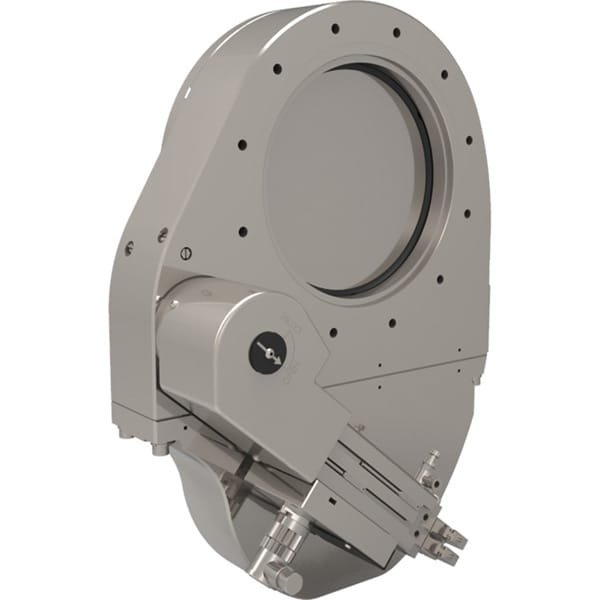Pendulum Valves Overview
Pendulum valves are typically employed to isolate pumps in areas where traditional gate valves cannot be accommodated due to geometric constraints.
Features
- TFM pendulum valves offer an impressive cycle life of 200,000 operations.
- Constructed from durable 6061-T6 aluminum.
- Equipped with reed sensors and a 24VDC solenoid.
- Available in bare aluminum or hard anodized surface treatments.
- Capable of operating within a pressure range of up to 10⁻⁹ torr.
Specifications Table
| Manufacturer | TFM |
|---|---|
| Pressure | Torr Min: 7.500 x 10-9 Torr Max: 900 Torrmbar Min: 1.000 x 10-8 mbar Max: 1200 mbar |
| Rates | Leak Rate 1.000 x 10-9 mbar*L/s 7.500 x 10-10 Torr*L/s |
| Temperature | Bake Actuator Temp 80.0 ºC 176 ºFBake Body Temp 120 ºC 248 ºFBake Solenoid Temp 50.0 ºC 122 ºF |
| Shaft Seal Material | Fluorocarbon (FKM) |
| Cycle Life | 200,000 |
| Actuator Type | Pneumatic Single Acting |
| Solenoid Kit Included | Yes |
| Max Differential Pressure Before Open | 5.00 mbar |
| Max Differential Pressure | 1.20 bar |
| Bonnet Seal Type | Fluorocarbon (FKM) |
| Valve Body Material | Aluminum |
| Valve Seal Material | Fluorocarbon (FKM) |
| Gate Material | 6061-T6 Aluminum |
| Gate Seal Material | Viton |
| Reed Sensor Included | 1 |





Reviews
There are no reviews yet.